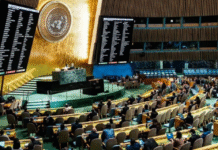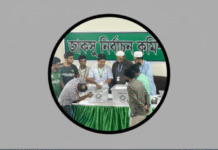The Dhaka metro rail project has run into a tough obstacle as authorities are now faced with the challenge of shifting underground power lines that intersect the planned routes for the mass transit system.
Although there had been a feasibility study in 2008, four years later the Power Grid company Bangladesh (PGCB) set up a 33kV high-voltage underground transmission line stretching between Agargaon and Dhaka Cantonment – which fall under the proposed metro rail route.
Apart from this major hiccup in the plans, other utility projects since the 2008 have also reshaped the underground layout of power lines in the area under the metro rail project.
So, the Tk1,200 crore of funds set aside for the sole purpose of relocating utility lines – including water supply lines as well – is now expected to be far less than the amount needed in reality for the Dhaka Mass Rapid Development Project.
Sources involved in the project work told the Dhaka Tribune that survey reports regarding the underground utility layout – provided by several government agencies – are unlikely to reveal the true complexity of the situation.
In a hands-on attempt to figure out the task ahead, the project authority has now started its own survey to verify the utility situation; the survey was kicked off on Monday in the capital’s Pallabi area.
Inspecting the survey site yesterday, Mofazzel Hossain, director of the metro rail project, told the Dhaka Tribune: “The elevated metro rail will be constructed over the middle of the existing streets. So the utility verification survey will be completed in the [project] areas within December this year.”
Insiders said the metro rail authority has formed a technical committee to review whether the 33kV line by the PGCB should be shifted seven feet left of the metro rail project alignment.
Asked about this, Mofazzel said: “The technical committee has already estimated a Tk62.63 crore cost for shifting the [33kV] power line.
“We will immediately send a letter to the Power Grid company Bangladesh for shifting the high-voltage line,” he added.
“Without shifting the power line, it will not be possible to set piers for metro rail,” the project director said.
Sources told the Dhaka Tribune that the PGCB finished the work on the 33kV line between the time the feasibility study was carried out and the project was given the final approval by the government in 2012.
When asked about this, PGCB Assistant Manager (public relation) ABM Badruddoja Khan said: “When the underground power line was being set up, the metro rail project had neither been approved nor was it in its implementation stage. So, the issue had not been in consideration.”
According to government rules, any project must keep in consideration whether its own implementation would disturb any upcoming projects.
The first phase of construction of the metro rail project, the second largest infrastructure project in the country after the Padma bridge, is expected to be finished by December 2019. The entire project is supposed to take another year to be completed, although the duration of the project on papers is 2024.
According to a study by the Japan International Cooperation Agency (Jica), the metro rail trains will be able to operate every three minutes and carry 60,000 passengers an hour.
Source: Dhaka Tribune










